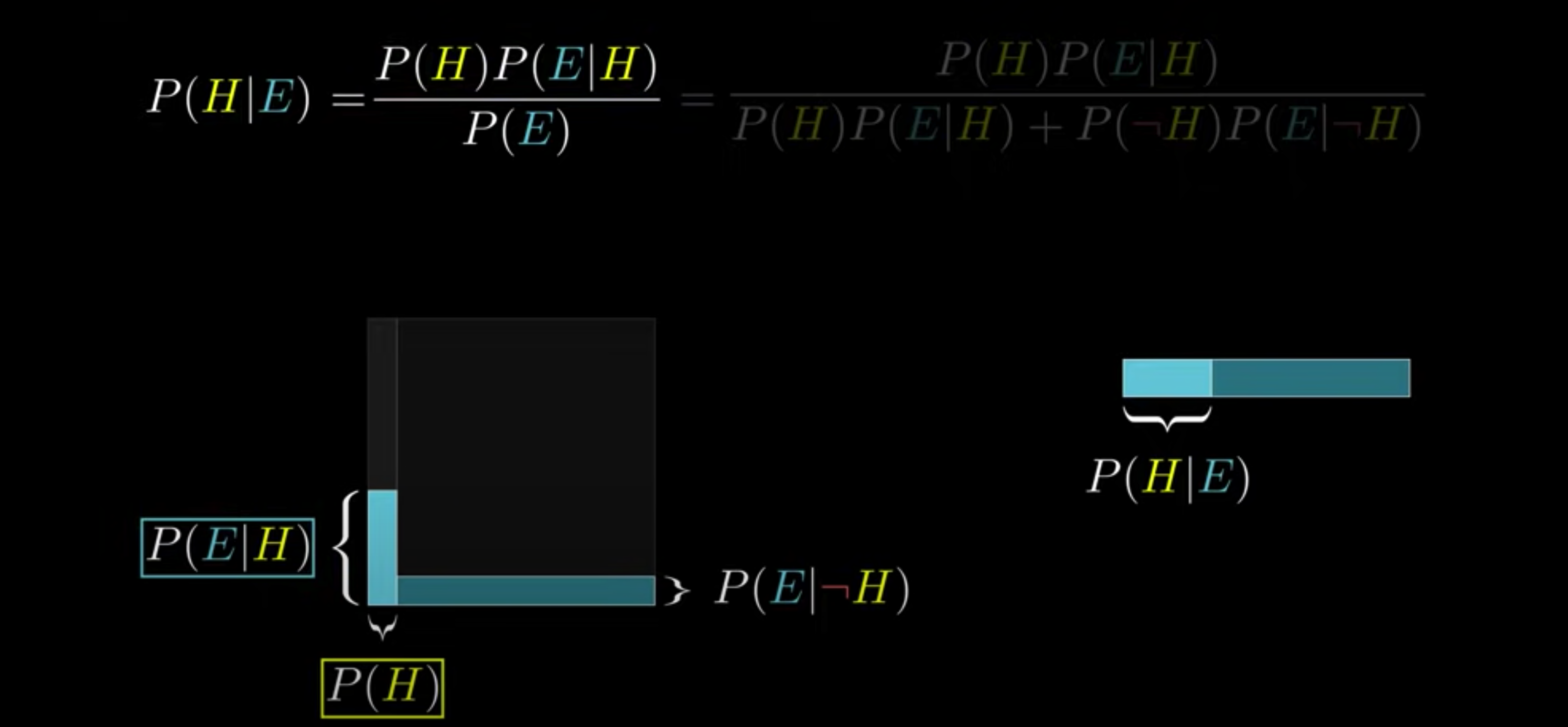Bayes Theorem
Bayes Theorem (Thomas Bayes 1761) allows calculation of true probability based on a sample of prior knowledge and a base rate1. Seeing evidence should update prior beliefs, i.e. it should restrict the space of possibilities and the ratio you need to consider after that2.
Think about a base rate for the Hypothesis P(H) (e.g. what is the
ratio of librarians to farmers, say 1:20). Now consider seeing evidence
(e.g. the person is meek and reserved), in the case where the hypothesis
is true, let’s say that among librarians that would be 40% or 4 out of
10 librarians this is P(E|H)1. Among farmers the rate is lower say
1/10 this would be P(E|¬H). In order to find P(H|E) or the
probability of the hypothesis given that we see the evidence you have
to consider what is the base rate times the rate of seeing the evidence
(P(H)P(E|H)) divided by the total group that fits the evidence
P(H)P(E|H) and P(¬H)P(E|¬H).
Simplified:
P(A)= Prior (base rate, probability that the hypothesis is true)P(B)= Total probability of seeing the evidenceP(A|B)Posterior: Given Hypothesis, and some New Evidence, what is the probability that the hypothesis is trueP(B|A)= Likelihood: Probability that we would see this evidence give that the hypothesis is true

1. Lewis, M. The Undoing Project: A Friendship That Changed Our Minds. (W. W. Norton & Company, New York, 2016).
2. Bayes Theorem. (2019).
Footnotes
-
|means given that, so P(E|H) is Probability of seeing the evidence given that hypothesis is true ↩